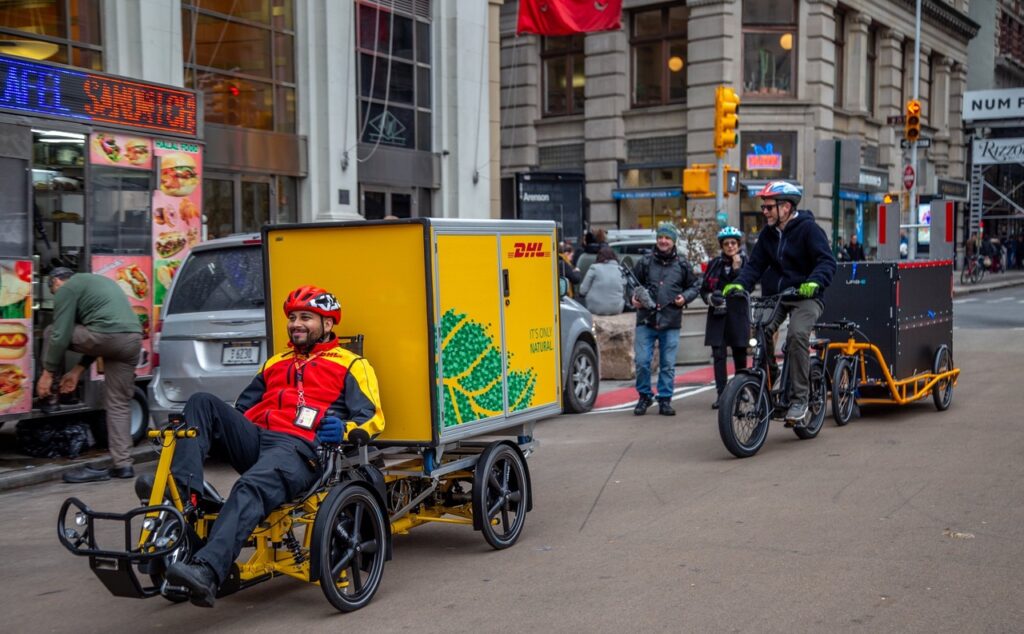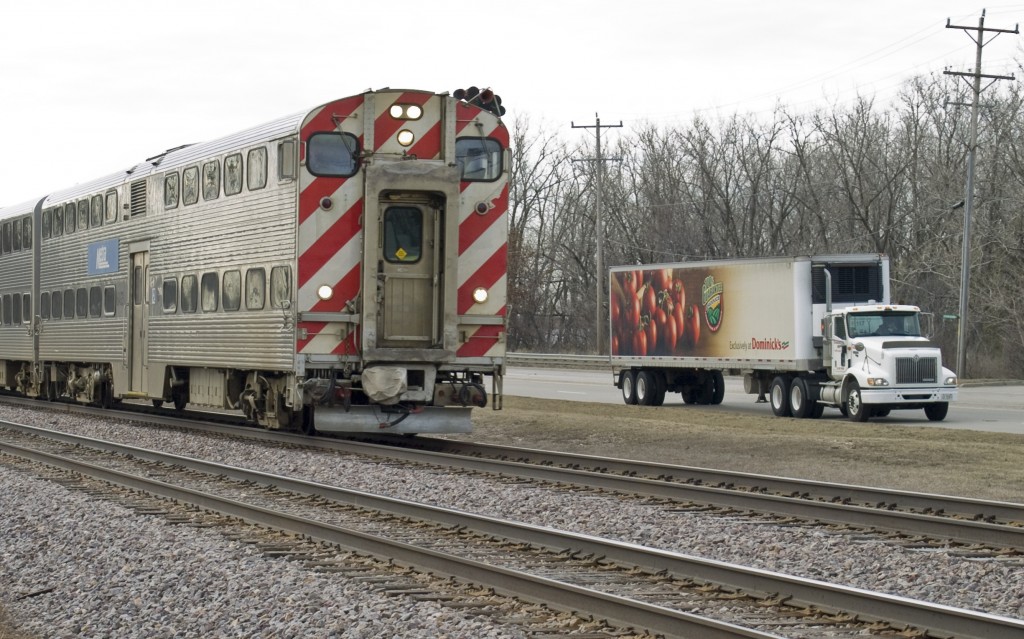
UPS chief and other business leaders urge Congress to pass a bill that helps both commuters and freight

David Abney, the recently hired chief executive officer of UPS, recently penned an editorial in Bloomberg/BNA that provides an illuminating look inside the priorities of the booming freight company — based in the same city where we hosted a policy breakfast on metro freight movement just two weeks ago.

Everybody wins. Flickr photo by Thomas Merton
Abney’s comments put a bright line under the importance of Congress updating our country’s outmoded freight policy in the next federal transportation authorization.
He argues that Congress still needs to update the federal program from its roots in a 20th century “highway bill” to a truly 21st century “transportation bill” that knits all modes of transportation together. “My sense tells me that to truly impact America’s transportation infrastructure problem, we can’t approach it just from the standpoint of ‘trying to fix our road’ or ‘trying to fix our ports,’” he said. “Instead, we need to think first about the real end goals: 1) getting to and from our destinations and 2) making those commutes as quick, efficient and cost-effective as possible.”
When we were developing our policy platform a year ago based on the feedback we were hearing in meetings around the country, a consistent theme — especially when meeting with local chambers of commerce or metropolitan business leaders — was that moving freight and people was often one of their top priorities. Forget about the usual simple debates between spending on maintenance versus new road capacity, or whether a particular area should build this rail line or that highway; chambers especially seem to grasp that a) freight movement is critically important to the local (and national) economy and b) you can’t make a plan to move people that doesn’t also account for the movement of stuff, and vice versa.
But like any discussion of federal transportation policy these days, the elephant in the room is always funding. And affirming much of what you’d expect from businesspeople, they’re willing to pay more, but only for a smarter approach that can improve the bottom line:
Of course, before even having a broader debate about infrastructure, we need Congress to pass, at minimum, funding support for vital maintenance and repair programs. Otherwise today’s infrastructure won’t even be around for tomorrow’s solutions. …To address congestion and drive down transportation costs, we need a holistic approach–one that integrates all modes of transport, and that includes dedicated funding mechanisms. Whether it’s a vehicle-miles-traveled tax, raising the gas tax, implementing waste-reduction policies or reallocating government spending, we’ll need a way to pay for these crucial investments.
Abney’s thoughts are similar to what we heard in his company’s hometown just a couple of weeks ago for a policy breakfast we convened with the Metro Atlanta Chamber. At the Chamber offices in downtown Atlanta, we heard from Doug Hooker, executive director of the Atlanta Regional Commission (Atlanta’s MPO), Jannine Miller, senior manager at The Home Depot, and David Abney’s colleague Frank Morris, UPS’s vice president of corporate and public affairs.
All the speakers represented Atlanta-based businesses or metro leaders with a keen interest in seeing the region keep freight and people moving each day. “Atlanta started as a freight hub and has stayed true to that,” said Doug Hooker with ARC. “We, as leaders in Atlanta, need to figure out how that job growth center will continue in the future.”
While there are real flaws with the “Travel Time Index” when it comes to putting a specific dollar value on congestion’s cost to everyday commuters, businesses like UPS or Home Depot that deal in very specific timetables see much more tangible losses. “If UPS’ drivers are stuck, the company puts more drivers on the road. For UPS, a 5 minute delay on every driver every year costs UPS $110 million,” said UPS’ Morris.
“One of metro Atlanta’s biggest advantages is our multimodal transportation system,” said Miller with Home Depot, with a nod to the railroads that helped make Atlanta an economic powerhouse. “The future of our business will be heavily invested in utilizing those last mile connections.” The home improvement chain certainly knows about last-mile connections: the goods from manufacturers around the U.S. and the world eventually have to reach stores located everywhere from downtown NYC to small towns in California.
Because most companies like UPS can’t deliver off-peak, finding ways to reduce demand or more efficiently utilize roadway space at peak times can be a win-win for everyone. A robust and heavily-used transit system in a metro region could be a freight company’s best friend, moving large numbers of people quickly during peak commuting hours without having to take up space on highways they depend on, while also lowering transportation costs for metro residents. UPS’ Abney illustrated this people-first way of thinking in the superb conclusion of his editorial.
America’s transportation infrastructure can become stronger and more efficient if we work at moving people, not just planes, trains and automobiles separately. “Good” can’t be defined exclusively according to road engineering manuals, and while a nationwide “people-based approach” might sound idealistic, it’s also the approach most informed by bottom line impact. A truly functional transportation infrastructure system isn’t just about how many cars we can fit on a particular stretch of highway; it might be, for example, about how we can allow trucks to deliver along busy retail corridors, or how we can best facilitate customers being able to reach their local businesses, no matter where they are in the world.
Put differently, to really get the best bang for our infrastructure buck, we must measure and account for how transportation investments drive growth and support quality of life. The questions we ask about infrastructure need to change accordingly. Are there ways to achieve the same transportation goals by investing limited resources differently? Are we investing in the research, engineering and alternative fuels that will transform commutes and save money? And are we thinking about ways to “right-size” projects–selecting infrastructure investments that might accomplish 90 percent of our goals, but at a fraction of the cost?
Our thanks to Dave Williams and the rest of the team at the Metro Atlanta Chamber for hosting and organizing the terrific policy breakfast.



